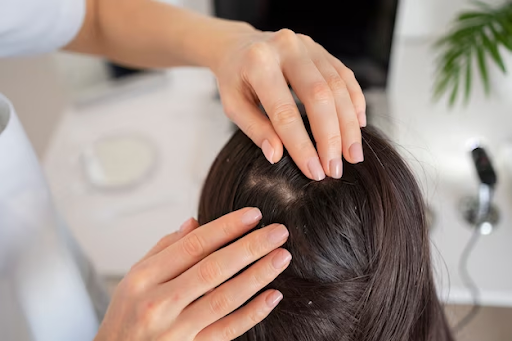The thyroid gland is an endocrine gland located in the neck, just below the Adam’s apple. The thyroid gland produces two primary hormones: Thyroxine (T4) and Triiodothyronine (T3), and the interfollicular C cells produce Calcitonin.
The synthesis of thyroid hormone follows these steps:
- Sodium Iodine Symporter: Iodine is taken up by the follicular cells with the help of sodium iodine symporters.
- Oxidation: After the entry of iodine into the follicular cells, it oxidizes to the iodonium ion in the presence of the thyroid peroxidase enzyme.
- Organification: Iodonium ions combine with the tyrosine molecule to form Monoiodotyrosine and Diiodotyrosine.
- Coupling: Monoiodotyrosine combines with Diiodotyrosine to form T3, and Diiodotyrosine combines with another Diiodotyrosine to form T4.
- Stimulation by TSH: After the synthesis of T3 and T4, they are transported to thyroid follicles and are released only upon the stimulation of thyroid-stimulating hormone from the anterior lobe of the pituitary gland.
- Peripheral conversion of T4: In the liver and kidney, T4 is converted to T3 with the help of the 5-deiodinase enzyme.
Thyroid hormones play a crucial role in various body functions, including growth and development, carcinogenesis, and the regulation of heart rate, among others.
Hypothyroidism
The level of T4 decreased and TSH level is elevated. The deficieny of this hormone in adults i s Myxodema and in childrens known as Cretinism.
The causes are includes failure of pitutary gland, Surgical removal of throid gland, deficiency of iodine and Hashimotto’s disease. The drug induced hypothroidsm caused Carbamazepine, Lithium, Amiodarone and Sodium nitro prusside.
The sign and symptoms which includes
- Weight gain
- Cod tolerance
- Depression
- Loss of hair
- Bradycardia
- Constipation
- Menstrual changes
- fatigue
- Joint pain
- Dry skin
- Muscle cramps & Myalgia
- Mental retardation
- Voice changes
Treatment
Thyroxine/ Levo thyroxine
Levothyroxine is the synthetic form of Thyroxine (T4). It should be taken in the early morning, 60 minutes before meals or 3 hours after eating. It is Pregnancy Category A, so it is safe during pregnancy. Usually, in pregnancy, the dose of the drug will be increased, and in elderly patients, the dose of the drug is decreased.
The dose of the drug should only be determined by a healthcare provider because it is based on blood tests and symptoms to ensure that thyroid hormone levels are within the normal range.
Hyperthyroidism
Hyperthyroidism means an increased level of T4 and a decreased level of TSH. The major cause of hyperthyroidism is Graves’ disease, an autoimmune disorder where antibodies stimulate the thyroid gland to produce a large amount of T4.
The signs and symptoms include:
- Weight loss
- Heat intolerance
- Anxiety
- Thinning of the hair
- Tachycardia
- Diarrhea
- Insomania
- Diplopia
- Bulging eyes
- Myalgia
Treatment
1.NaI2 Inhibitor
The sodium iodine symporter is the first step involved in the synthesis of thyroid hormone, and these drugs inhibit the first step. Drugs include Thiocyanate, Perchlorate, and Fluoroborate. Due to high toxicity, these drugs are not used nowadays.
2.Thyroid peroxidase
The thyroid peroxidase enzyme helps with the oxidation of iodonium ions, and these drugs inhibit this step. They include Carbimazole, Methimazole, and Propylthiouracil.
Adverse drug reactions (ADRs) of these medicines include Agranulocytosis, Leukopenia, Bone marrow depression, and Aplastic anemia. Propylthiouracil is safe in pregnancy.
3.Thyroid Hormone Release Inhibitors
These include Sodium Iodide, Potassium Iodide, and Lugol’s solution
4.Thyroid Gland Destruction
The destruction of the thyroid gland leads to permanent Hypothyroidism, which requires a lifetime supplementation of T4. It involves iodine-131( I131)
5.Deiodinase Inhibitors
Deiodinase is responsible for the conversion of T4 to T3, so the formation of T3 is decreased. These drugs include Propylthiouracil, Amiodarone, and Propranolol.
The healthcare provider will determine the most suitable treatment for the disease, following a blood test. Regular check-ups every 3 to 6 months are beneficial for early diagnosis and treatment, preventing complications


